There have been so many cool local goings-on I hardly know where to start: do I finally blog about my incredible Goodwill fashion finds? Or the awesome certified organic farm stand up the road? Or my trip to the Portland Museum of Art plus dinner at locally-owned restaurant, Nosh? Or the wedding shower I went to recently for my cousin’s fiance (Hi, Holly:) where the presents were either local, organic, natural, homesteady (think canning jars and cookbooks, perennials and pot-holders) or… red wine?
With so many topics, I chose the most local of all: my front yard garden.
Remember this?Now it looks like this!
There is a real difference between the tomato plants on the house-end of the bales and the road-end. I think the house-end plants get just a smidge more sunlight…enough to make a huge difference, not just in tomatoes but also in the pumpkin plants on the very ends as well as the corn and beans on the ground below. (I couldn’t resist a Three-Sisters planting or four!) While the Early Girls are already ripening and the two German Striped heirlooms are setting on fruit, the large brandywine in the center back bale has an issue. There have been plenty of blossoms, but then, sadly, the blossoms break off at the stem-bend just where the plant should be pumping some energy to create a band of strong material to hold a big, plump, juicy fruit.
Thinking maybe I’d either over-nitrogened the thing and underfed it some other vital nutrient, I got down to Plummer’s Hardware to pick up some organic fertilizer specifically for tomatoes and veggies. This one has nitrogen, posphate, potash, calcium and sulfer made from feathers, poultry manure, cocoa meal, bone meal, alfalfa meal, greensand, humates, sulfate of potash, and gypsum. Ask for Espoma Organic Tomato-tone at your local garden center. I noticed a big difference right away in all the ‘matoes…they all grew even taller and lusher within the week. Now I’m waiting to see if old brandywine there actually sets on some more fruits other than the two bottom ones that popped out just after getting home from Snell’s greenhouses.
Now, some of you long-time readers will remember my past gardening woes including powdery mildew and Japanese Beetles. (See Of Pests and Powdery Mildew from August 2010) I am sad to report that the beetles are back, along with new friends–aphids and ants. My poor crabapple tree is an infested mess!
It’s my own fault. People gave me advice about sprinkling some kind of powder underneath to kill the beetle larvae. Instead, I planted garlic around the tree, hoping it would somehow repel the pesky pests. No such luck, though I do hope to have some green garlic soup very soon. In the meantime, I continue with my usual methods of pest control: a jar of bleach water for the beetles and a quick pinch and pull to get rid of the aphids and the ants milking them. Yes, ants “raise” aphids and milk their secretions. Gross, except, well, think about us with cows and goats. By the time I get to the aphid farms, the little stem or branch of the tree is pretty sick and generally comes right off in my fingers. Then those ants get angry and bite me! I’m serious. They are NOT happy to lose their farm at all. I say, go west, young ant!
And then there is the powdery mildew. Now, you all know my thoughts on trying to be a food producer here on my wooded, exurban, one-acre lot. It’s pretty much an exercise in futility, really. I keep trying new things, but in the end I may be defeated. I thought I’d come to terms with the pine and beech tree shade and the sunny but tragically unusable leach field. The new garden boxes were to be my saving grace, my compromise with reality. I could practice vegetable gardening in the miniature, experiment with many types of plants, and treat said veggies like highly-irregular ornamentals…that I could nibble. They do look fabulous. See how the pink & black box has grown.
This was Memorial Day weekend.
Now, the cucumbers are running like crazy, and by that I mean they are flowing out of the box and onto the ground like leafy snakes. Tiny cuke-spikes grow behind the pretty yellow blossoms, fatten, and lengthen until they just aren’t pickling size anymore at which point I pluck them, peel them, and serve them on salad for dinner.
I’ve picked six of these babies so far…and there are more to come as long as nothing happens to them. The zucchini are blossoming. The summer squash are already beginning to fruit. All looks well until…
I notice the big patch of bee balm in my front perennial bed, just beside the cuke and squash boxes, is covered in powdery mildew! Now, we’ve had so much heat and humidity that I shouldn’t have been surprised. A little more research, and I learned that overcrowded conditions also contribute to the mold problem. That bed was looking a little crowded this year. Looking back at previous photos, I see that some of the old plants in the bed had powdery mildew in previous years, so the spores were probably there in the ground just waiting to bloom.
No matter. What mattered was that if I did nothing, that mold would spread to the just-about-to-produce squash and cukes and kill all my hopes and dreams for fresh garden salads and zucchini cooked over the grill and summer squash casserole. I got out my gardening blades and chopped that darn bee balm right off and buried it in a pile of leaves in the woods far from the boxes. Now my perennial bed looks like a second-grade boy with a summer buzz-cut and I’ve pretty much decided to plant shrubs in that spot this fall (rhododendron? azalea? winterberry?).
In the meantime, my cucurbits are in grave danger. I noticed one small summer squash had already turned brownish on the blossom end and had gone soft and limp. It was dying, if not already dead. And this was before one sign of mildew on the leaves! I did moreresearch and learned that while you can’t reverse an infestation of mold, you can prevent it with anti-fungal sprays. There are commercial products, but I was intrigued by the remedy recommended on a number of organic gardening sites: baking soda, vegetable oil, and water.
Now, the baking soda is supposed to change the pH of the leaves, making them inhospitable to the powdery mildew. The oil helps the solution cling to the leaves. I made mine with 1 tablespoon soda, 1 tablespoon Maine sunflower oil, and 1 quart of water. I mixed it in a pitcher, poured it into a plastic spray bottle, and sprayed all the leaves on top and underneath after fertilizing and watering this morning. A healthy plant is much less susceptible to any sort of pest or problem.
Why do I have powdery mildew problems, anyway? Simple. Mold likes moisture and heat. We’ve had high humidity and high temperatures. In addition, my lot is surrounded by tall trees acting very effectively as windbreaks. Nice in the winter (except when said trees fall over), but in the summer that means the tops of the trees across the road may be tossing in the wind, but in my garden the pretty little set of chimes Hubby gave me doesn’t even let out a single cling…or clang, for that matter. In other words, we get no air circulation thanks once again to the trees.
I pulled the peas up today to give the zucchini and summer squash in that box a little more breathing room. Hopefully that will help. But to be honest, I may not do veggies again. Or else, forget the cucurbits. I can buy plenty at the local farm stands and farmer’s markets.
On a happy note, an application of tomato food to the greens boxes has made a huge difference. Take a look!
Out of the micro micro-greens that refused to grow, I decided to pluck up everything but the spinach which looked somehow…different, as if it had potential. My instincts appear to be correct as it is now growing nicely behind the shade of the green beans. Perhaps the greens boxes get more sun than they need? Maybe I should grow a sheltering row of flowers or something in the front squares next year? The last-ditch planting of kale seeds in all the squares where nothing grew has produced some sprouts, so perhaps a fall crop of greens will be forthcoming after all.
What I’ve learned? Fertilizer helps. I love the idea of using only home-produced or at least locally-produced compost, but I’m beginning to suspect that in order to get all the nutrients needed for a really good crop in a box, a balanced fertilizer is a necessity. In a double-dug bed, some of those nutrients would be present in the soil, and perhaps a yearly application of good, home-grown compost from the remains of plants grown in those beds would suffice. Or maybe growing a cover crop of some nitrogen-dense plant would work. But in these self-contained garden boxes? I think a little extra additive is a necessity.
Which brings me back around to my other point. Do I continue to play with vegetables? Or do I simply work with ornamentals and use my money to support the local farmers? Imagine what they could have done with the $200 plus I spent on straw bales, boxes, compost, additives, seedlings, seeds, etc. Probably fed a couple of families, while I get few handfuls of peas, some pickling-size cucumbers, thirty or forty tomatoes (please, oh please!), some basil, some squashes…
It all depends on what happens with those squashes, people! If they don’t work out, I will cast around for another direction for my one-acre “homestead.” I still have this idea about growing shiitake mushrooms…
Stay tuned for more … Outside the Box.


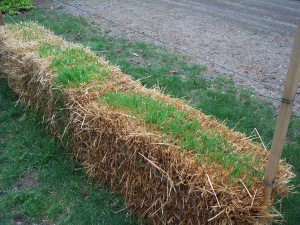





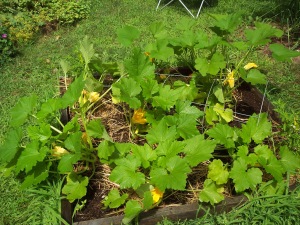
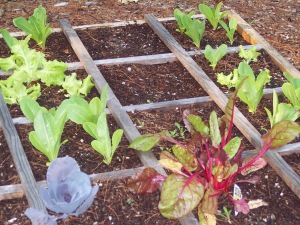

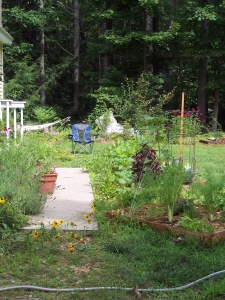



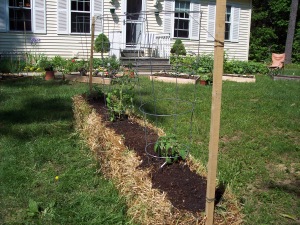


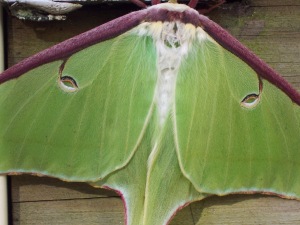



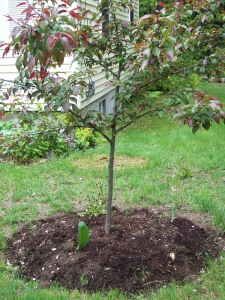

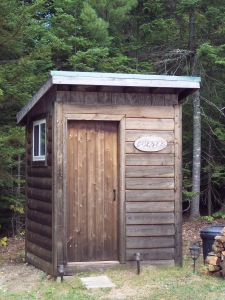

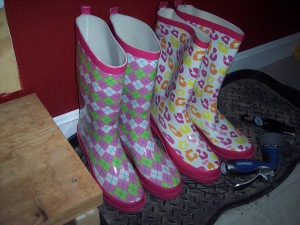


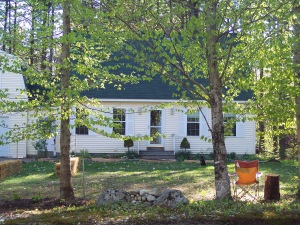



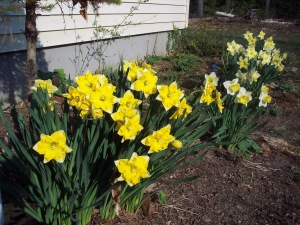
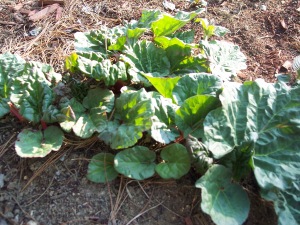


You must be logged in to post a comment.